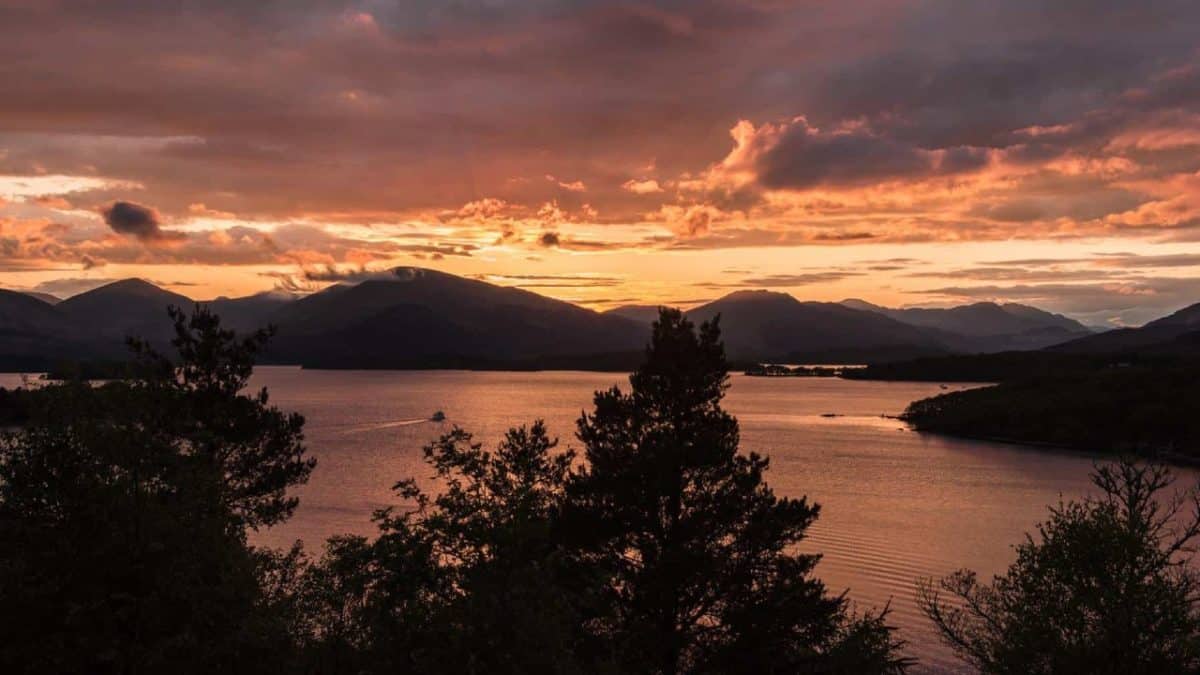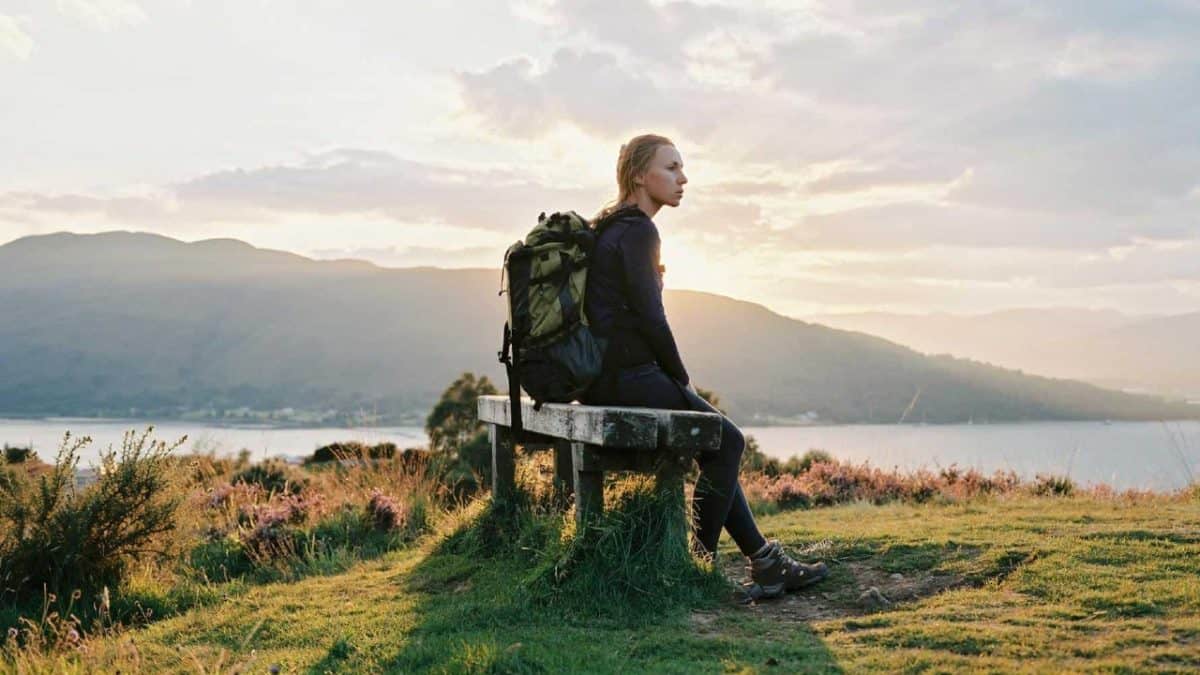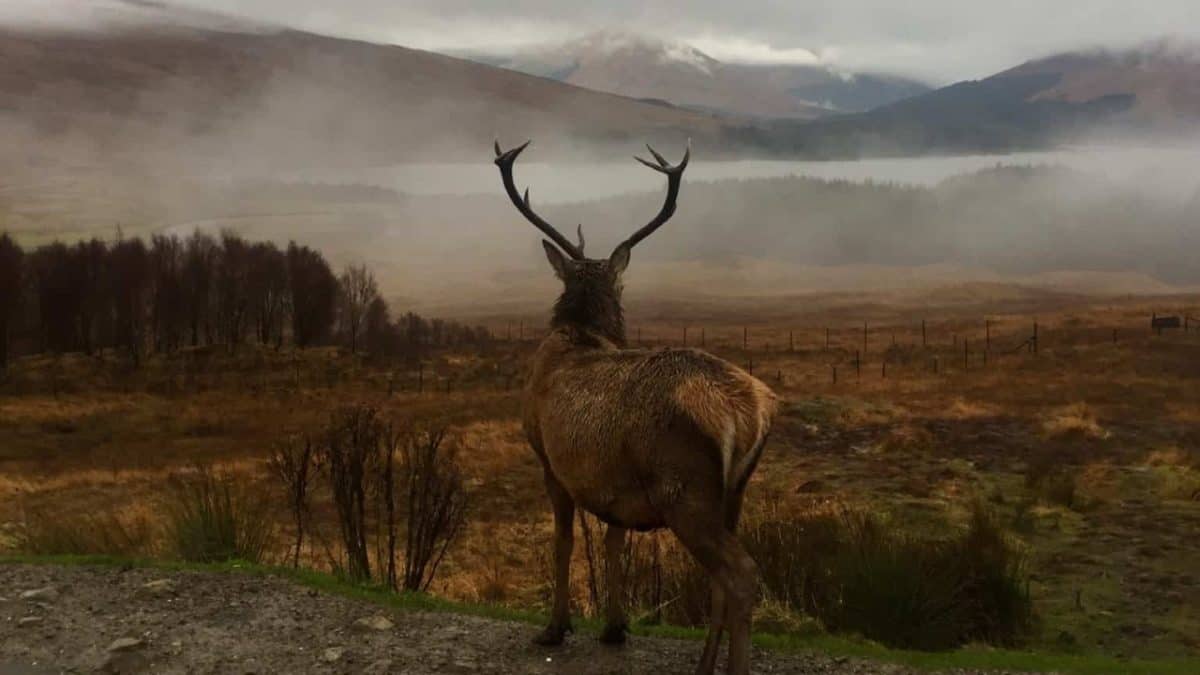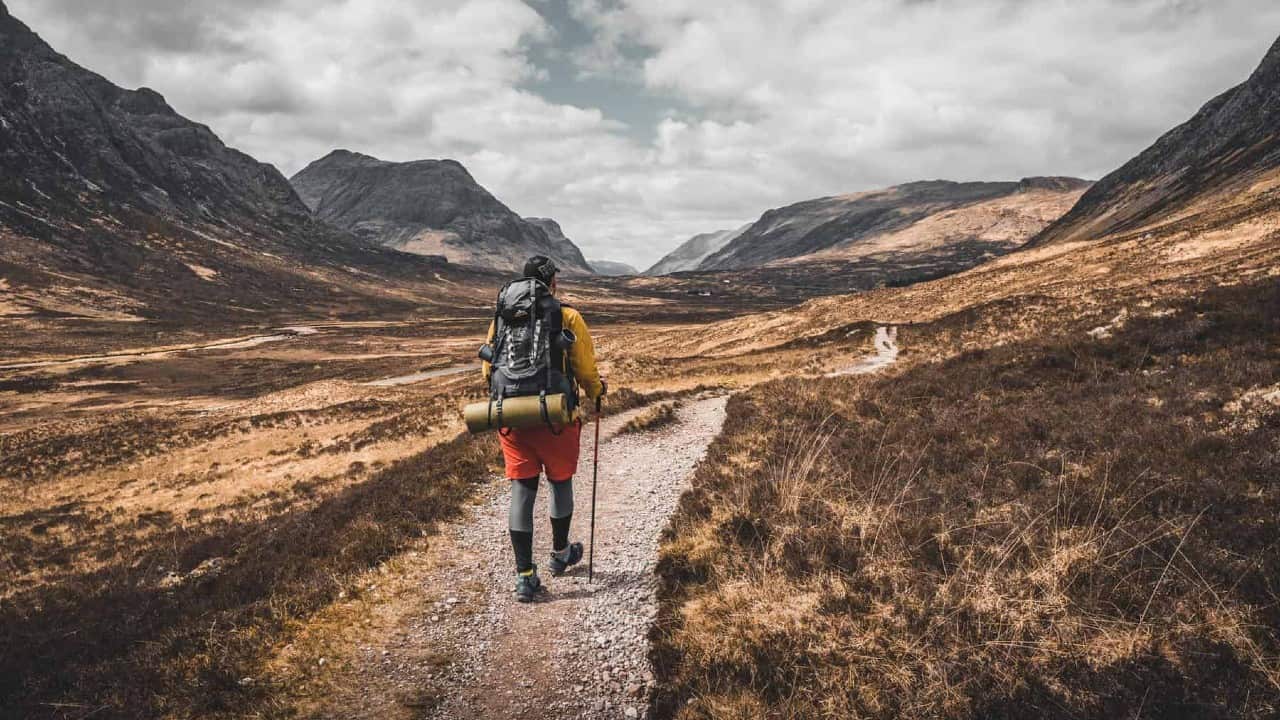With its open glens, mountain passes, thickets of forests, and idyllic lochs, the West Highland Way is every backpacker’s dream. Tens of thousands of people from all over the world walk this scenic trail every year – it’s one of the planet’s prettiest routes that can be walked in a single week.
However, that doesn’t mean that walking the West Highland Way doesn’t require meticulous planning. In this article, we’ll provide a general overview of this popular Scottish long-distance route and help you prepare for its wonders as well as difficulties.
What is the West Highland Way Like?

This long-distance trail is 96 miles long and ventures along forestry paths, abandoned railways, ancient roads, rolling hills, and scenic lochs. While there are some steep climbs on the way, the route is not particularly arduous and is usually in good condition. Keep in mind that conquering each of these steep climbs is guaranteed to reward you with a stunning view.
At the route’s southern end is a town called Milngavie. It is located around 6 miles away from the center of Glasgow and most of its residents commute to Scotland’s most populous city to study or work there. The route ends in Fort William, a relatively remote but bustling Highland town that is only a couple of miles away from the UK’s highest mountain – Ben Nevis.
When is the Best Time to Walk This Route?
While most people consider that summer is the best time of year to walk the West Highland Way, this is also when the route is populated by thousands of hikers from all over the globe.
The result of this is pretty obvious – finding the serenity and peace that the wilderness brings can be quite difficult. Furthermore, walking the West Highland Way in summer means dealing with midges, Scotland’s most famous (and most irritating) flying insects.
For that matter, the best time to walk this route is in Spring – the temperatures are more pleasant, there’s a remarkable growth of fresh life, and it’s too early in the year for midges. The month of May, in particular, can be a fantastic time to walk the West Highland Way. During this month, the weather tends to be clear and dry, which is ideal for observing the unforgettable views that this trail offers.
It is a good idea in bad weather to let someone know when you will arrive at your next stop also take your mobile phone, (though the networks are patchy). On the second half of the trek, it is advisable to have a compass, (and know how to use it), the weather in Scotland can change very quickly and the fog can fall causing trail finding to be considerably more difficult. However, that is for the worst of conditions.
Planning an Itinerary

Like with all other hikes, deciding which direction you’ll be walking in is of crucial importance. A vast majority of WHW trekkers walk south to north. Not only is the southern end of the trail easier to reach by public transport, but walking south to the north also keeps the sun out of the hiker’s eyes.
This scenic route is usually split into five to eight days. Five, seven, and eight-day itineraries are provided below:
|
|
5 days |
7 days |
8 days |
|
First day |
Milngavie to Balmaha |
Milngavie to Drymen |
Milngavie to Drymen |
|
Second day |
Balmaha to Inverarnan |
Drymen to Rowardennan |
Drymen to Rowardennan |
|
Third day |
Inverarnan to Bridge of Orchy |
Rowardennan to Inverarnan |
Rowardennan to Inverarnan |
|
Fourth day |
Bridge of Orchy to Kinlochleven |
Inverarnan to Tyndrum |
Inverarnan to Tyndrum |
|
Fifth day |
Kinlochleven to Fort William |
Tyndrum to Kingshouse |
Tyndrum to Inveroran |
|
Sixth day |
|
Kingshouse to Kinlochleven |
Inveroran to Kingshouse |
|
Seventh day |
|
Kinlochleven to Fort William |
Kingshouse to Kinlochleven |
|
Eight day |
|
|
Kinlochleven to Fort William |
How long is a bit of string? The time element is your choice. If you have two weeks there are a great number of Munros near the West Highland Way to add extra days to the West Highland Way.
It is possible to walk the whole way in six days without a break,(hard going and little fun) however if you are not reasonably fit and don’t have some experience of this distance eight would be a better choice. For those who have some general walking experience, seven days should be fine. But remember some days are easier than others.
Difficulty
No great level of experience is required for walking the West Highland Way, and no high level of fitness either. If you can walk a Sunday walk in the hills of 15-30 km, you should be able to walk the West Highland Way.
The first half of the West Highland Way is along the bottom of Glens, the edge of Loch Lomond, and gentle countryside, some of the most glorious walking country in Scotland; bear in mind though you will be carrying your filled rucksack, unless you use a rucksack carrying company – of which there are a few.
If you don’t have basic outdoor walking experience or knowledge, consider joining one of the many groups that are organized.
The West Highland Way is very well marked making it almost impossible to get lost, the waymarks are generally brown wooden posts with the thistle at the top and a yellow arrow (yellow arrows are also used on the Camino de Santiago, Spain, a 750km walk). Also, except in winter, you will meet many other walkers who will normally help if you are experiencing any trouble.
Finding and Booking Accommodation

As the most popular long-distance route in Scotland, the West Highland Way is dotted with places where you can stay. However, these places are very busy most of the time, so it’s incredibly important to book in advance.
While it’s not presented in the most user-friendly format, the official website provides a list of hotels, hostels, B&B’s, and inns that are present on or next to the trail.
Baggage Transfer & Accommodation Booking Services
Another consequence of this trail’s immense popularity is the sheer number of companies that can arrange the entire journey for you. In general, this includes the transfer of luggage as well.
Like accommodation providers, the official website of the West Highland Way also provides a list of booking services and luggage transfer companies.
What About Camping?

Along the West Highland Way, trekkers will bump into numerous campsites. In addition, some of the pubs and hotels that are located on or near the trail also allow camping, one of which is the isolated Kings House Hotel.
As long as you’re following the Scottish Outdoors Access Code (you can find more on that here), you will also be able to wild camp on most of the trail. One particularly great thing is that there are a lot of water sources along the way.
Finally, it’s important to keep in mind that, on some parts of the route, certain by-laws are active between spring and autumn. In most cases, these forbid wild camping in specific areas.
What Should I Pack?
Packing your backpack for walking this picturesque trail requires a bit of strategic planning in order to keep the bag packed with essentials but also comfortable and lightweight enough for long days out in the wild.
Some of these essentials include food, drinking water, multi-tool, first-aid kit, portable stove, energy snacks, additional layers of clothing, utensils, hiking poles, emergency whistle, toilet paper, antiseptic wipes, binoculars, headlamp, gloves, hats, bug repellents, tick-removal tool, scissors, sunglasses, sunscreen, battery backup, travel insurance, and other items.
For more info, check out our article on what to pack for the West Highland Way.
Carry enough cash with you, there are few cash machines along the walk. Credit cards will be accepted in hotels and restaurants, but for B&Bs and carry out evening meals, campsites, and hostels you will need cash. Beware – most of the cash machines in shops charge £1.75 for a withdrawal! Read my post on eating on the West Highland Way as well.
For camping budget £10-15 per day
Hostels £20 – 25 per day
B&B £35 – 50 per day
Hotels £75 – to whatever per day
Check out my post on hiking the Great Glen Way as well.
Extending Your Journey
All three West Highland Way itineraries we listed above can be easily extended with side excursions along the route as well as with an extra trip at their end.
A lot of trekkers enjoy taking a day trip to Ben Nevis and Ben Lomond. For the most adventurous trekkers, the best option would be to simply keep walking and combine the West Highland Way with the Great Glen Way. This 73-mile trekking route starts at Fort William and finishes in Inverness, the capital of the Highlands.

I love hiking, backpacking, and camping. From the Camino de Santiago to the West Highland Way in Scotland or simply a great day hike on the weekend. Hiking refreshes me, my mind, and keeps my body reasonably fit. So far I have walked three Camino routes and many other long distance hikes in the UK, Canada, and around the rest of Europe. One of the best was my hike up Ben Nevis.

